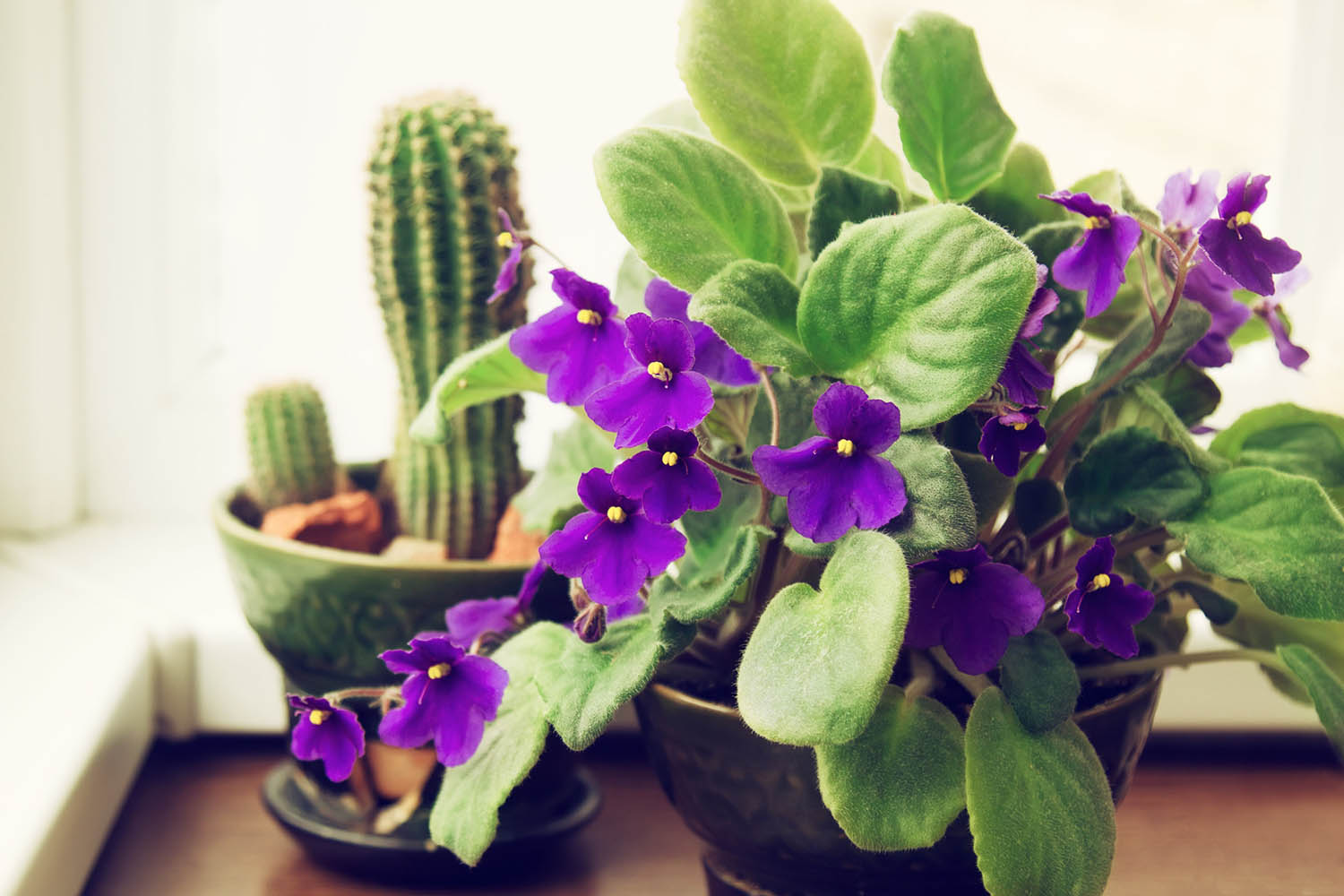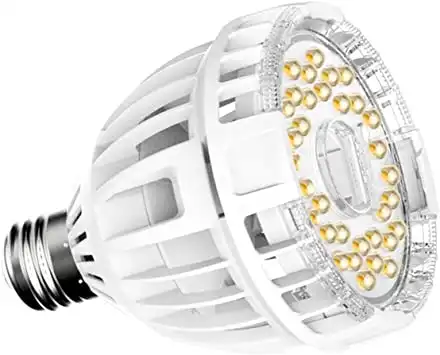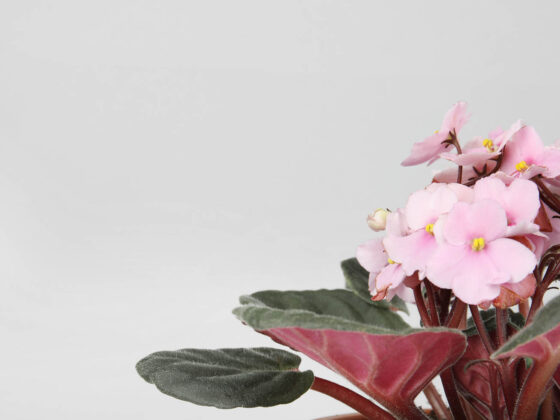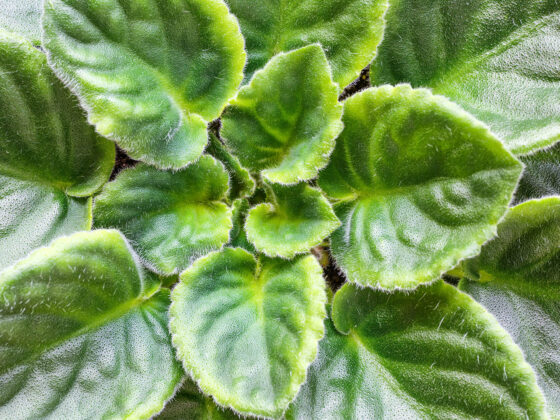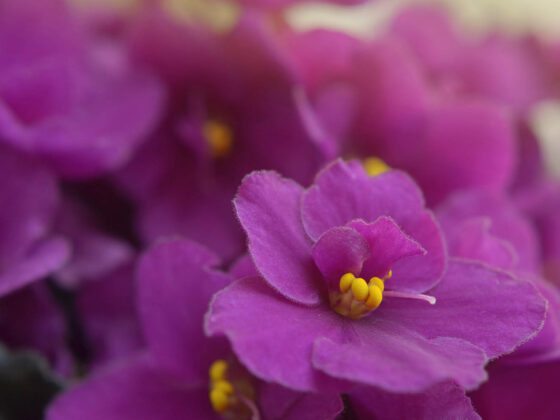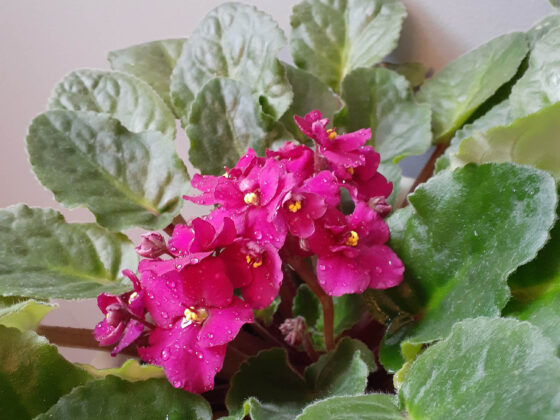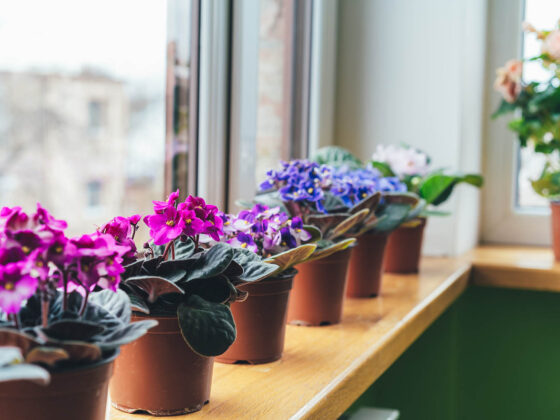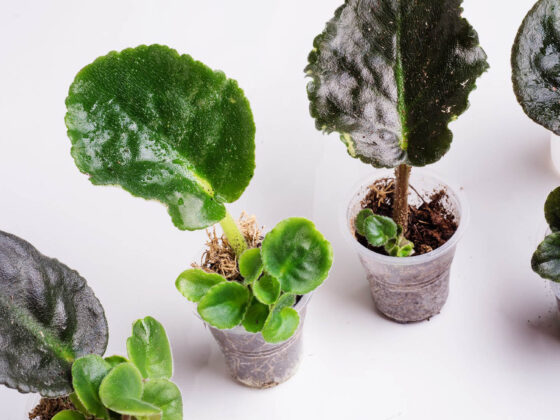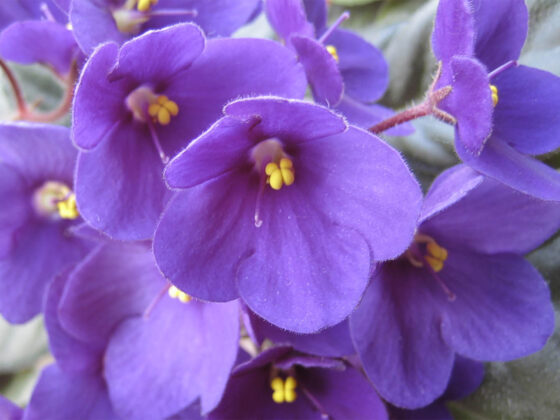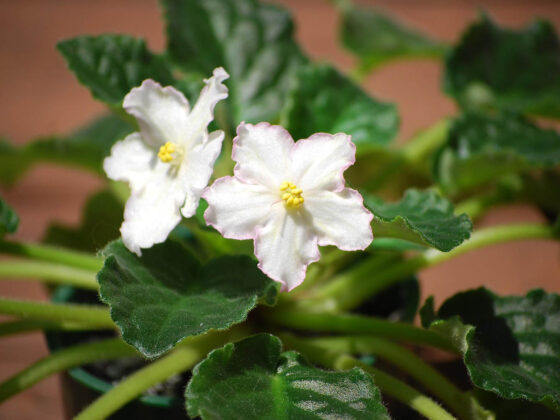If you’re struggling to get your Saintpaulia to flower, you may have wondered whether natural sunlight is enough. Supplementing your plant’s light with a grow lamp is a time-honored way to get more blooms. This guide will explain how to use a grow light on your African Violet, and what kind of lighting it needs to produce flowers.
African Violets require 8 hours of light per day to grow flowers. However, you’ll get extra-lively flowering if you can bump that up to 12-16 hours. The best brightness for African Violets is between 10k and 20k lux. Use only fluorescent or LED grow lamps, and be sure not to place them too close to your plant.
You’ll need to pay attention to your African Violet to make sure that it’s not getting too much light. We’ll review the signs of over-lighting (and under-lighting) and give you some tips on creating a great grow light setup. Keep our ground rules in mind, and you’ll soon have your African Violet blooming like a rock star.
How Long Can African Violets Bloom?
How much flowering is normal for your Saintpaulia? The answer depends on what you mean by “normal”.
In the right conditions, African Violets can stay in bloom for virtually the entire year. These plants come from the tropical regions of East Africa. In their natural habitat, the length of the daylight hours doesn’t change much from month to month. As a result, African Violets don’t have a built-in seasonal cycle. They can keep forming new blooms as long as they have everything they need to grow.
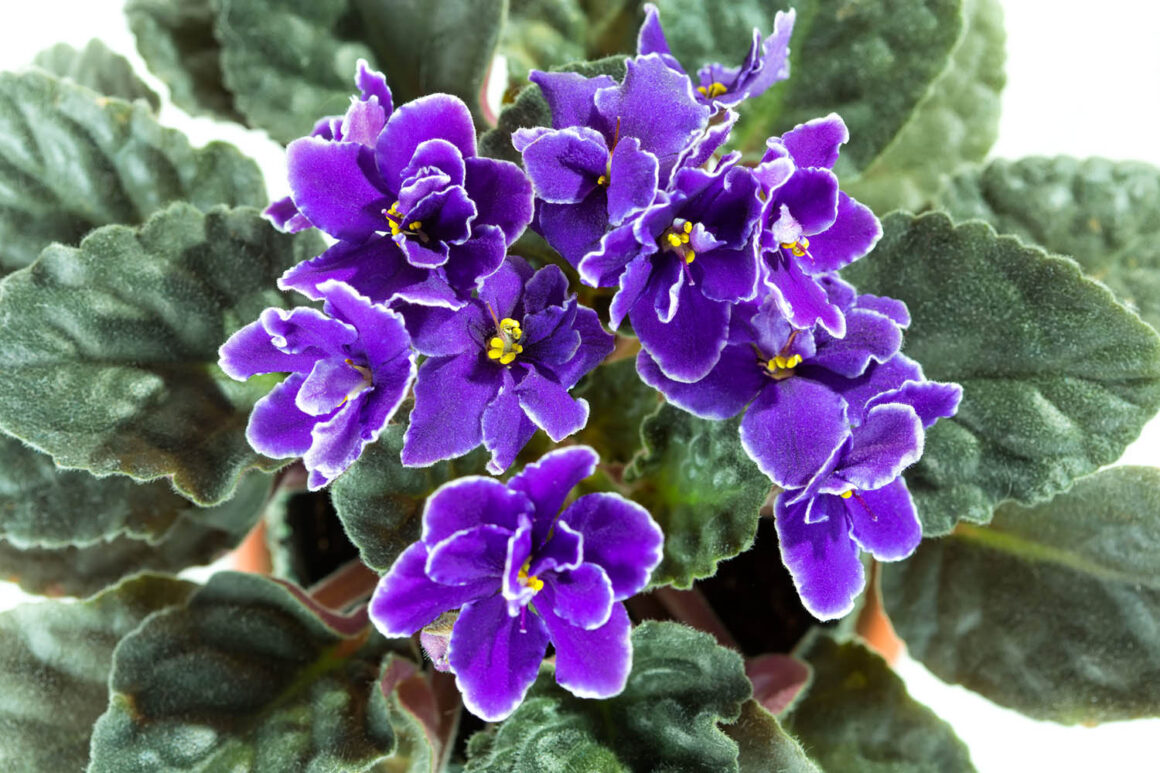
However, that’s a tall order if you don’t live in the tropics. Indoor spaces don’t receive enough daylight during the winter to keep an African Violet flowering. Our article on the best lighting for Saintpaulias offers some tips on finding the best-lit spots in your home. But if you’re relying on natural light, you probably won’t see year-round blooms on your African Violet.
Instead, its flowering will slow down and stop as the fall deepens into winter. When spring hits, your plant will shake itself out of slumber, then bloom heartily through the summer.
When your plant is in bloom, the individual flowers can last for a few days to a few weeks. The time frame varies depending on what kind of Saintpaulia you have. And there are thousands of different cultivars. You’ll need to ask the grower or plant store what’s typical for the plant you’ve bought.
How Much Light Do African Violets Need to Flower?
The bare minimum requirement for getting blooms from your African Violet is 8 hours a day of bright, indirect light. Solar energy powers all of your plant’s functions, and making flowers takes more power than almost anything else.
Technically, most temperate regions get around 8 hours of daylight even in the dead of winter. But your plant is cut off from a lot of that light when it’s living indoors. Between the walls, the roof, and the frequent cloudy days, most African Violets go dormant during the winter.
That’s because dim light doesn’t get the job done. African Violets need bright, indirect light to bloom. They can’t sit right in a sunbeam, but they do like to soak up lots of reflected or filtered rays. The proper brightness level is between 10,000-20,000 lux (or 900-1100 foot-candles). If you want to get scientific about it, measure the lighting around your African Violet with a lux meter to see how yours compares.
Even if you can give your African Violet a consistent 8 hours of bright daylight, it will probably bloom in waves. The plant will store up sunlight, produce a crop of flowers, then go back to stockpiling energy once the petals fade.
That may be just fine with you. After all, most houseplants don’t sport flowers year-round, and we still love them when they’re in foliage mode. But if you want a Saintpaulia that’s always blooming, it needs a 12- to 16-hour day. This will ensure that it always has a surplus of energy to spend on flowers. To pull this off, you’ll have to use a grow light on your African Violet.
What Kind of Grow Lights Are Best For African Violets?
Your first choice when picking a grow lamp for your African Violet is fluorescent vs. LED. Never use halogen or incandescent bulbs to grow your plants. They give off too much heat, and they’ll most likely cook your African Violet.
Saintpaulias have been popular houseplants for a long time. Many experienced growers got started before LED lights were a thing. So you’ll find lots of care guides that assume you’re using fluorescents. The usual recommendation is to go with tube-shaped shop lights, typically a T8 size (1 inch in diameter).
You can get plenty of healthy blooms from your African Violet with fluorescent grow lights, but we prefer LEDs. They’re not necessarily better for your plant, but they use less electricity, so they’re better for your wallet in the long run.
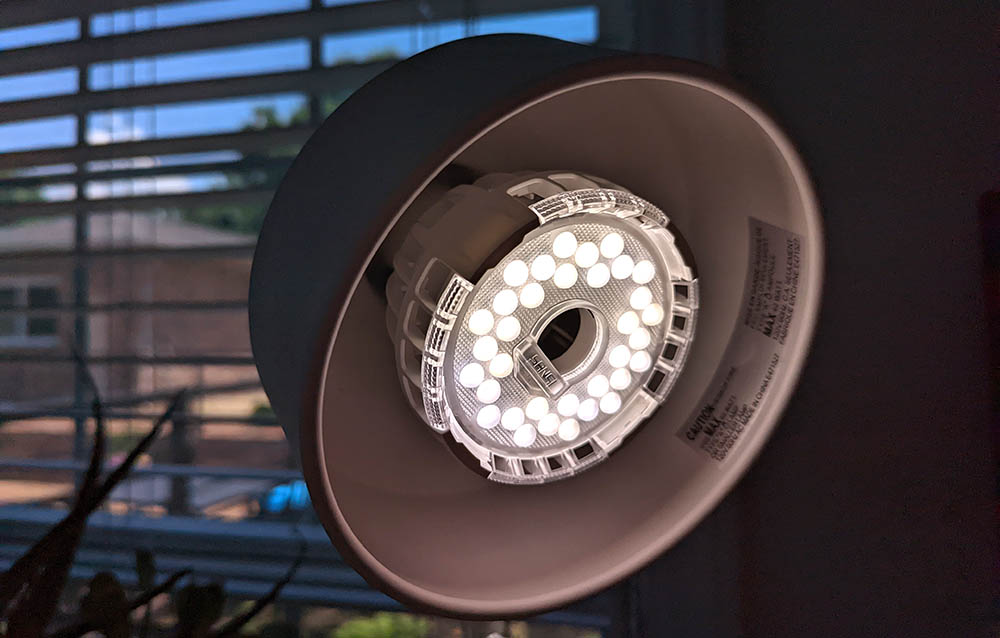
LEDs do cost a bit more up front, though. And they give off less heat, so you might prefer fluorescents if you’re having trouble keeping your plants warm in the winter.
Whichever type you use, make sure your lamp emits light in both the red and blue color ranges. Red helps your African Violet form flower buds, while blue helps it grow foliage. With fluorescents, you can combine a “warm white” bulb with a “daylight” bulb to cover both ends of the spectrum.
Since LED lamps are made up of dozens of tiny diodes, they can pack a broader range of color into one “bulb”. Look for something labeled “broad-spectrum” or “full-spectrum”. These don’t actually give off a complete spectrum of light, but they hit the notes that matter most to plants.
Our Favorite Grow Lamps for African Violets
We’re not big fans of having shop lights hanging in our living rooms. Most people grow African Violets to make their homes prettier, and shop lights look too industrial for our taste. We prefer something that can fit in an ordinary lamp or light socket. African Violets are compact plants that don’t require a large light.
That’s why we recommend the Sansi 15W LED Bulb if you want to use a grow light on your African Violet. It’s affordable, it’s discreet, and it puts out exactly the colors that plants need to thrive. This will come as no surprise if you’ve read some of our other articles on plant lighting. The Sansi is our go-to recommendation for a single-plant setup.
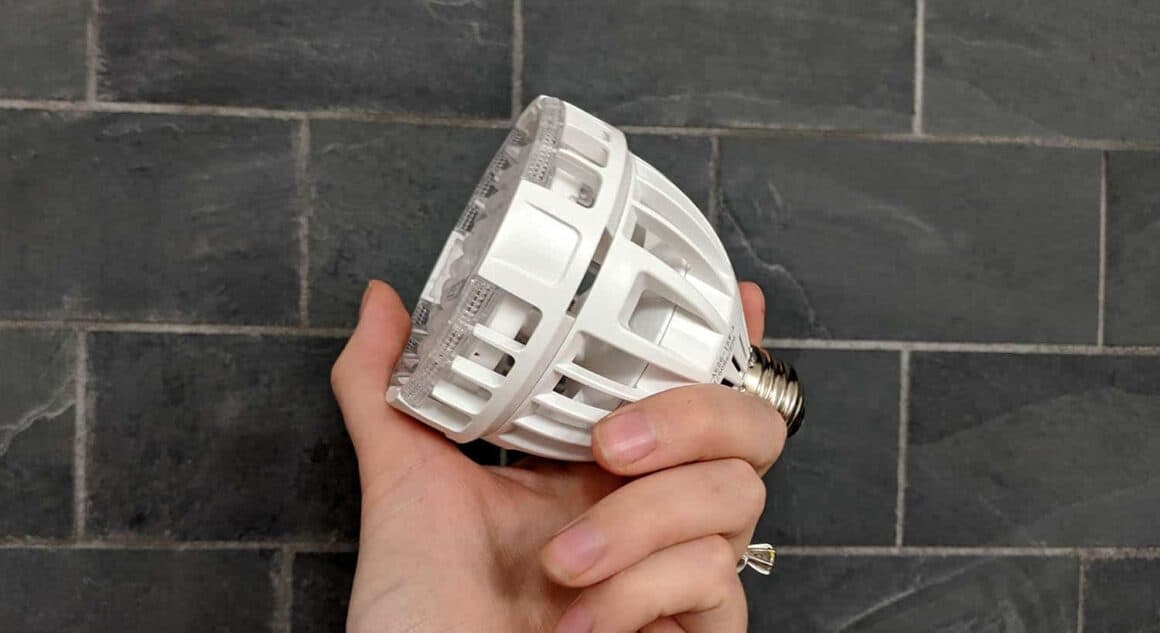
What if you want to light up multiple African Violets? LED grow light panels like these can be good options. They’re wafer-thin, so you can stick them to the underside of a shelf without affecting your decor much.
How Far From Your African Violet Should Your Grow Light Be?
Getting the right grow light for your Saintpaulia is only the beginning. You also have to set it up correctly. The amount of light your African Violet gets will depend on how far away you place the bulb. The right distance varies based on the bulb’s strength and the width of the light it casts.
The Sansi bulb we recommended above casts 1050 lumens with a beam angle of 60 degrees. You should keep it about a foot above your African Violet to get the right light intensity. If you’re using another bulb, this calculator will help you do the math.
A quick and dirty rule for fluorescents is to hang them around 12-18 inches above your Saintpaulia. You can go a little closer if you’re only using one bulb instead of two in parallel. Still, it’s always best to double-check with the calculator.
Another option is to test the light intensity directly with an illuminance meter. You can fiddle around with the bulb height until you get a reading between 900 and 1100 foot-candles.
Managing Your African Violet’s Light Exposure
You might think more light is always better for your Saintpaulia. That’s only true up to a certain point. African Violets need at least 8 hours of darkness in each 24-hour cycle, or they can’t flower. So leave your grow lights on for 16 hours a day at the absolute most.
Even that’s probably overkill unless you’re growing your plant in a basement. If your African Violet is getting some natural light, 6-12 hours under the grow lamps be plenty. You can experiment to find out what level of exposure gives you steady and beautiful flowering.
An outlet timer is the easiest way to set your African Violet’s lighting schedule. Just decide when you want it to switch on and off, set the timer, and plug your grow lamp in.
It’s best if you can set your grow light directly above your African Violet, shining straight down. If the only way you can make it fit is at an angle, rotate your plant occasionally. A quarter-turn every 2-3 days should be fine. This will ensure your Saintpaulia gets light on every side so that it doesn’t grow lopsided.
Does Your African Violet Need More Light?
The advice above is a good place to get started with artificial lighting for African Violets. But blindly following rules isn’t enough when you’re dealing with living things. You need to keep an eye on your plant’s condition to make sure it has enough light to thrive.
One obvious hint that your African Violet needs more light is that it still won’t bloom. If a couple of months under the grow lamps haven’t gotten it flowering, its environment might still be too dim. Be careful, though – lack of flowering can also be due to problems like:
- Dehydration
- Overwatering
- Suckering or excessive foliage growth
- Low humidity
Take a look at our article on the reasons African Violets fail to bloom. Make sure there isn’t some other issue before strengthening your grow light setup.
If your plant is badly under-lit, it may become etiolated or “leggy”. That means that the foliage looks thin and sparse, with long petioles and skinny leaves that look washed-out in color. This is almost always a sign of poor lighting. Note that etiolation is different from a long central stem or “neck”, which is another issue entirely.
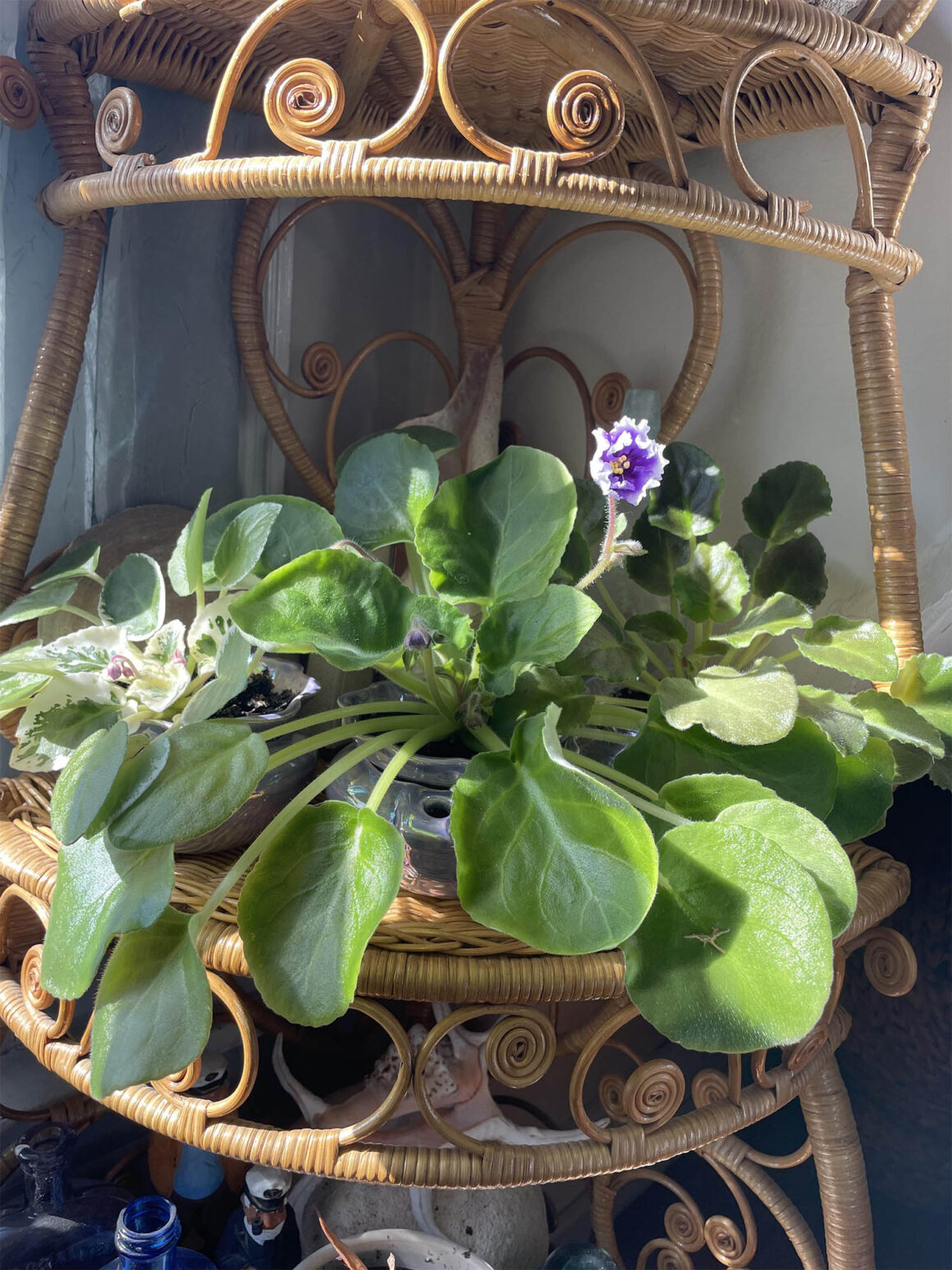
When you’re raising your African Violet’s light allowance, don’t do it all at once. Increase its time under the brighter lights by an hour or so every day until you find the level you want. A rapid change can stress out your plant.
Is Your African Violet Getting Too Much Light?
Grow lights that are too intense or too close to your African Violet can cause problems of their own. One potential issue is leaf scorch. Even LED lights can harm foliage if they’re not far enough away, though it’s more likely with fluorescents. Leaf scorch looks like bleached, dead spots on your African Violet, sometimes deepening to a dark brown at the edges.
An over-lit African Violet can also develop a problem known as a “tight crown”. Saintpaulias grow new leaves in the upper, central section of their foliage. Under good conditions, even the newer leaves shouldn’t overlap too much. But excess light makes them bunch together.
In an African Violet with a tight crown, the new leaves will look small, cramped, and shriveled. If you let this keep up, it will stunt your plant’s growth and stop it from flowering. Try moving your lights farther away.
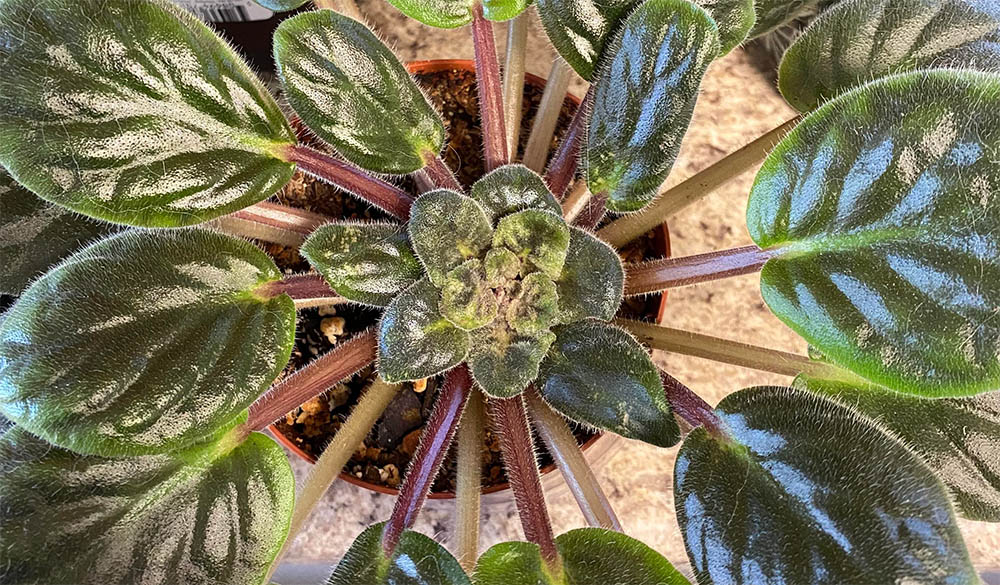
Again, you’ll need to rule out other possible causes. Too much fertilizer can also lead to a tight crown. So can an infestation of pests called cyclamen mites.
Over-fertilization often leaves a pale crust of minerals on the foliage and turns the outer leaves crispy at the edges. It’s less likely to make the inner leaves curl up. Mites, on the other hand, create dramatic distortions of the new leaves. They also leave gray or rust-colored spots at the leaf centers. The flower buds may develop curled, brittle stems.
Final Thoughts
It’s almost always helpful to use a grow light on your African Violet if it can’t seem to flower. Just make sure it’s not too powerful or too close to your plant. Keep adjusting your light setup and monitoring your plant’s condition until you find the arrangement it likes. Smart use of grow lamps will give you an African Violet that’s always bursting with blooms.
And remember the type of light you use will be important. That’s why we recommend a bulb with a full spectrum paired with an outlet timer to get the balance just right. With a few small purchases, you’ll be enjoying flowers year round!






